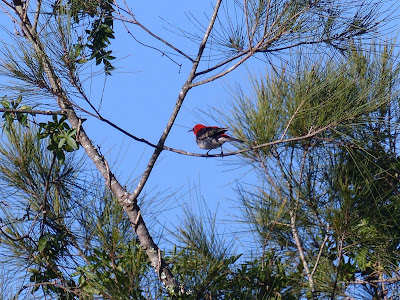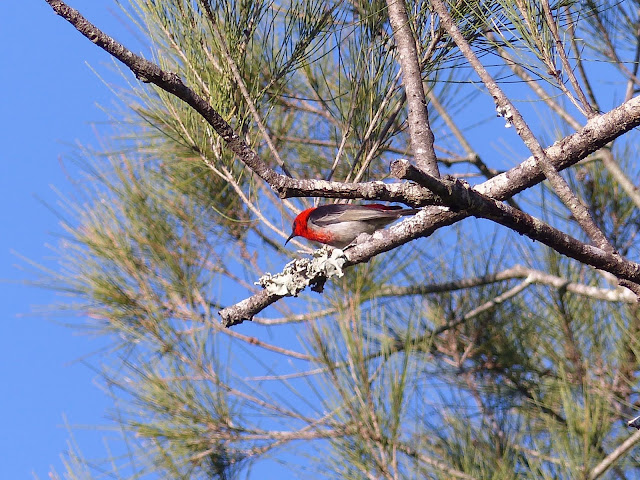Ending July with another gorgeous clear sunny day encouraged me to head again to Broadwater National Park in expectation. The late afternoon sun, as it turned out, provided some wonderful context. While the birds will not be new to you (or me), they remain fascinating because of the way they are noticed and "seen" differently as their environment constantly changes (or sometimes just seems as magnificent as last time!).
This time the two pied oystercatchers in close proximity looking down on the beach from the lookout..
Here the iridescent browns and greys of the bar-shouldered dove are highlighted as the shadows encroach the roadside. A treat when they are not so skittish to observe in such good light.
And, right on cue (late afternoon sortee for both of us!), I managed a glimpse of a white-bellied sea eagle heading south scouting the waves as I was wandering north behind the sand dunes. As I noted above, same clear blue sky, same gliding position of the bird ... still mesmerising!
While it was getting quite late, I dedcided to head down the Hind Dune track to the south a little way ... just in case 😊. It was worth it.
First this lovely pair of crested pigeons perched in a dead tree. The shadows accentuate a beautiful contrast to the starkness of the dead wood and the wonderful clear blue sky to the south west. No doubt the effect would have been more beautiful had I ventured off-track into the bush to the west of the birds - but my chances of doing so without disturbing them I decided to be minimal (and I prefer to remain on the track and do my bit to preserve the pristine park; just enjoy what I can by what is provided).
Next, to the east of the track this time, was a little wattlebird camouflaged well in a banksia. Fortunatley for the photographer they make a lot of distinctive noise and move confidently from tree and bush very often. Both sound and vision allow them to be located ... just not so often they emerge from heavy cover & remain still for good poses like this one (thank you).

Finally, reflecting the most prolific of the birds on this short late afternoon walk, is a study of the white-cheeked honeyeater. These birds are really active and relatively curious; they are certainly not at all worried about finding a perch in the open on dead branches from which to project their songs and seek insects. Here the "study" offers a variety of profiles supporting the name of the bird, their willingness to be seen (aided by the few yellow wing feathers) and in the final photo you can see the success of one of the hunts in the bill - remember a click on a photo brings up a slide show with a much larger version of the image.
Another of our beautiful songbirds!



















































